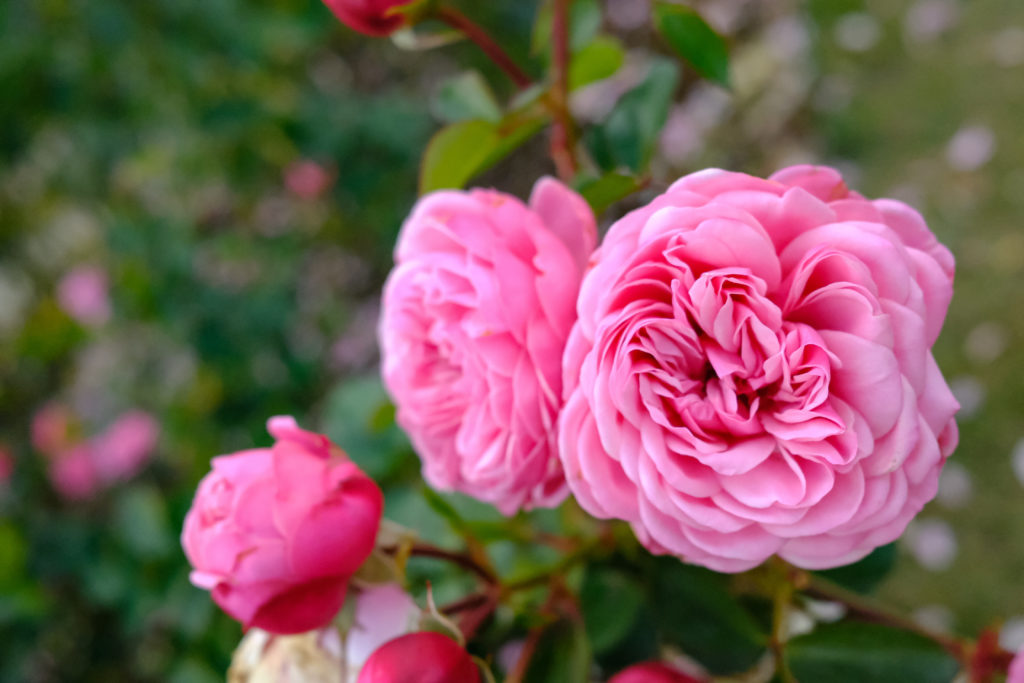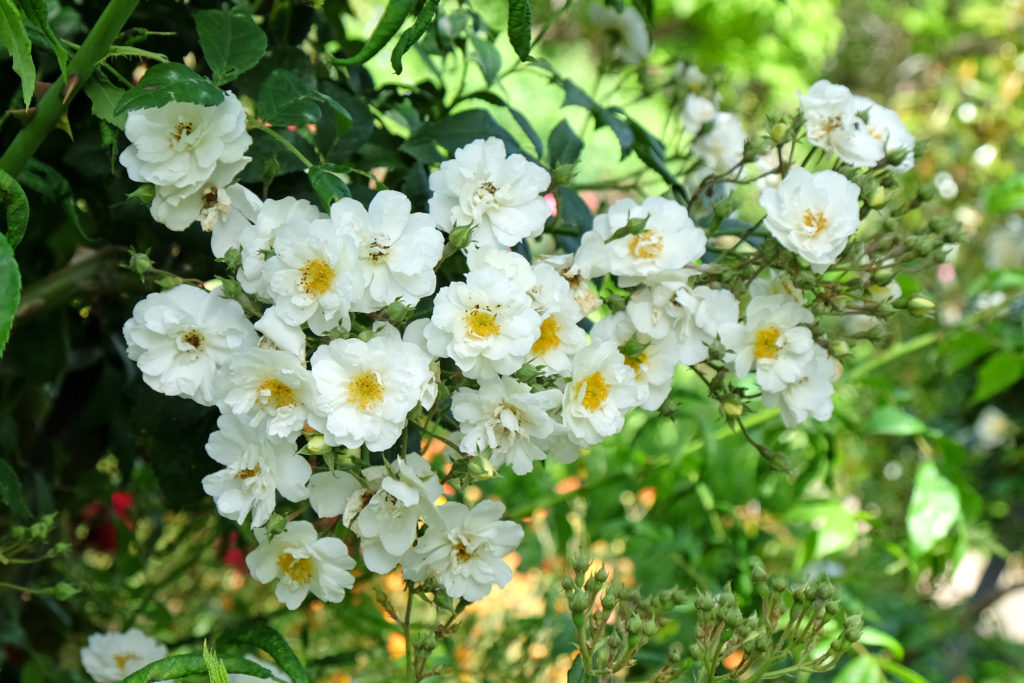Shrub roses are a diverse and hardy group of roses that bring beauty, fragrance, and structure to the garden. Unlike climbing or hybrid tea roses, shrub roses have a more natural, bushy growth habit, making them ideal for informal borders, mixed flower beds, or even as standalone specimens. Many varieties are highly disease-resistant, repeat-flowering, and easy to care for, making them an excellent choice for both experienced gardeners and beginners. Shrub roses can range from compact, rounded plants to larger, arching varieties that create a soft and elegant presence in the garden.

Common Types of Shrub Roses
Shrub roses encompass a wide variety of roses, including English roses, old-fashioned roses, and modern hybrids. Some of the most popular and reliable varieties include:
- ‘Gertrude Jekyll’ – A classic English shrub rose bred by David Austin, this variety produces large, deep pink blooms with an intense old-rose fragrance. It grows into an upright, bushy shrub and can also be trained as a short climber.
- ‘The Generous Gardener’ – A soft pink, repeat-flowering English rose with gently arching growth and a strong, musky fragrance. It is perfect for cottage gardens and informal borders.
- ‘Munstead Wood’ – A stunning deep crimson shrub rose with velvety petals and a rich, fruity fragrance. This variety is compact and works well at the front of a border or in a pot.
- ‘Buff Beauty’ – A delightful apricot-yellow shrub rose with clusters of lightly scented, semi-double flowers. It has a spreading habit, making it an excellent choice for covering large areas.
- ‘Graham Thomas’ – One of the best yellow shrub roses, this variety has a strong tea fragrance and a vigorous growth habit. It is excellent for mixed borders and makes a striking statement in the garden.
- ‘Boscobel’ – A medium-sized shrub rose with beautifully formed, salmon-pink rosette blooms and a strong myrrh fragrance. It is particularly well-suited to formal rose beds and mixed plantings.
Caring for Shrub Roses
Shrub roses are generally low-maintenance but benefit from regular care to ensure healthy growth and abundant flowering. They thrive in well-drained, fertile soil and prefer a position in full sun, though many varieties can tolerate partial shade. Planting shrub roses in soil enriched with organic matter, such as well-rotted manure or compost, helps promote strong root development.
Watering should be consistent, particularly during dry spells, to keep the soil evenly moist but not waterlogged. Applying a thick layer of mulch in spring helps retain moisture, suppress weeds, and improve soil quality. Feeding with a balanced rose fertiliser in early spring and again in midsummer encourages continuous blooming and strong growth.
Pruning shrub roses depends on the variety. Most modern shrub roses, including David Austin English roses, should be lightly pruned in late winter or early spring. This involves removing dead or weak growth and shaping the plant to maintain an open structure. For older or once-flowering varieties, pruning should be done after flowering to encourage new growth for the following season. A general rule is to remove about one-third of the plant’s height to keep it healthy and well-formed.
Shrub roses are typically resistant to many common rose diseases, but they can still be affected by black spot, mildew, and aphids. Keeping the area around the rose clear of fallen leaves, improving air circulation, and using organic treatments when necessary can help manage these issues. Companion planting with garlic, chives, or marigolds can also deter pests naturally.
Ways to Use Shrub Roses in the Garden
Shrub roses are incredibly versatile and can be used in a variety of ways to enhance different garden styles. They are perfect for mixed borders, where their soft, rounded growth habit blends beautifully with perennials such as lavender, salvia, and foxgloves. Their repeated flowering and strong fragrance make them a valuable addition to cottage gardens, where they can be planted in loose, informal groupings alongside delphiniums, peonies, and hardy geraniums.
For those looking to create a striking focal point, shrub roses work well as standalone specimens, especially in larger gardens. A single large shrub rose, such as ‘Graham Thomas’ or ‘Buff Beauty,’ can serve as a centrepiece in a lawn or open space, drawing attention with its abundant blooms and strong fragrance.
Shrub roses also make excellent flowering hedges, offering a softer and more colourful alternative to traditional evergreen hedging. When planted in a row, varieties such as ‘The Generous Gardener’ and ‘Hansa’ create a dense, informal hedge that provides privacy while supporting pollinators and wildlife.
Many shrub roses can be grown in large containers, making them suitable for patios and terraces. Compact varieties such as ‘Munstead Wood’ and ‘Boscobel’ thrive in pots when planted in high-quality compost and given regular feeding and watering.
For a more naturalistic and wildlife-friendly effect, shrub roses can be integrated into wildflower meadows or woodland-edge plantings. Roses such as ‘Rosa Rugosa’ and ‘Canary Bird’ work particularly well in these settings, attracting bees, butterflies, and birds with their simple flowers and ornamental hips.
With their combination of beauty, fragrance, and resilience, shrub roses are a fantastic addition to any garden, offering continuous interest throughout the growing season and a timeless appeal that suits both traditional and modern landscapes.


